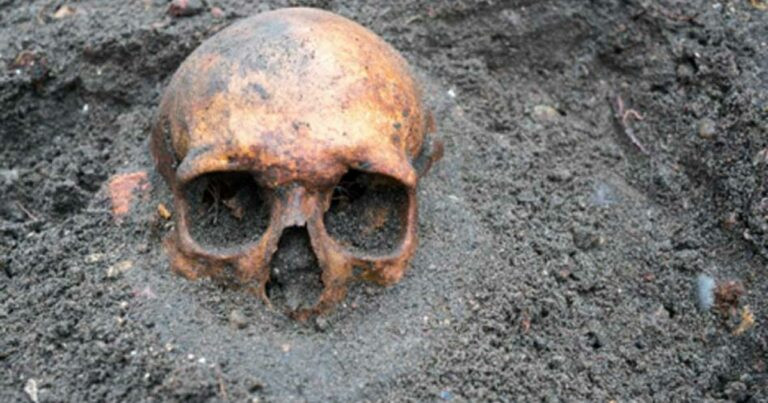In the field of human evolution, few discoveries have generated as much excitement and debate as the one made in the Apidima Cave of southern Greece. Hidden for more than four decades, a partial skull known as Apidima 1 has changed everything we thought we knew about early human migration. Dated to approximately 210,000 years ago, this fossil is now recognized as the earliest known evidence of Homo sapiens outside of Africa. This groundbreaking discovery, recently published in the journal Nature, not only rewrites the timeline of our species’ departure from Africa but also challenges long-standing ideas about the movement and evolution of early humans.

The story of Apidima 1 begins in the 1970s, when Greek scientists excavated two fossilized skulls—later named Apidima 1 and Apidima 2—from a remote cave on the Peloponnese peninsula. These bones were originally assumed to be Neanderthal remains and were left largely unstudied for decades due to the difficulty of analyzing their damaged and incomplete structures. However, with the advent of modern technology and advanced digital reconstruction methods, a multinational research team led by paleoanthropologist Katerina Harvati of the University of Tübingen decided to revisit the specimens.
Their investigation produced surprising results. Using 3D imaging and state-of-the-art analysis tools, the team was able to virtually reconstruct the fragmented skulls and assess their morphology with unprecedented accuracy. Apidima 2, as expected, was confirmed to be a Neanderthal, dating back about 150,000 years. But Apidima 1, the more fragmentary of the two, revealed an entirely different story. It displayed anatomical characteristics unique to early modern humans—Homo sapiens—and none of the distinct features typically associated with Neanderthals. Even more astonishing was its age: radiometric dating placed Apidima 1 at around 210,000 years old.
This timeline forces a dramatic reevaluation of our understanding of when and how modern humans left Africa. Prior to this discovery, the oldest confirmed Homo sapiens fossils outside Africa were from Israel, dated to about 90,000 to 120,000 years ago. The Apidima 1 skull predates these by nearly 100,000 years, suggesting that the migration of our species from Africa was not a single event, but a complex process involving multiple dispersals over tens of thousands of years.
These findings propose that early humans ventured into Eurasia far earlier than previously believed, perhaps in small, scattered groups that failed to leave a lasting genetic legacy. The dominant theory had long held that Homo sapiens migrated out of Africa around 60,000 to 70,000 years ago in a massive wave that eventually populated the globe. But the Apidima discovery supports an alternative view—that our ancestors attempted to spread into Europe and Asia in earlier waves, some of which were unsuccessful and ultimately replaced by later populations.
More broadly, this evidence contributes to a growing body of research indicating that human evolution was far from a straightforward, linear process. Instead of a simple march from primitive to advanced species, it appears that multiple types of humans—including Neanderthals, Denisovans, and Homo sapiens—coexisted and possibly interacted in various regions for long periods. Apidima 1, found in a region once thought to have been dominated exclusively by Neanderthals, suggests that Homo sapiens were present in Europe much earlier than anyone had imagined, only to later be displaced by Neanderthals and other archaic humans.
The implications are enormous. If early modern humans were already exploring parts of Europe over 200,000 years ago, it suggests a resilience and adaptability previously underestimated. It also raises critical questions about why these early groups didn’t persist and whether they contributed in any way—genetically or culturally—to later human populations. It underscores the fact that human history is not a straight line but a mosaic of migrations, extinctions, and interactions.
Moreover, the story of Apidima is a powerful reminder of how much we still have to learn. For decades, these skulls sat in storage, their importance hidden by time and technology. Only through patience, innovation, and a willingness to revisit old assumptions were researchers able to unlock their secrets. This discovery also highlights the value of international collaboration in science. It took a global team—drawing on expertise from multiple disciplines and countries—to fully understand what these bones had to say.
As we continue to uncover more fossils and apply new techniques, our picture of the human past will become even more detailed and complex. Each new finding has the potential to change everything we thought we knew, revealing just how dynamic and interconnected our evolutionary story truly is. The Apidima 1 skull stands as a landmark in this ongoing quest, not just for its age or location, but for what it represents—a turning point in our understanding of who we are and where we came from.
Ultimately, the discovery of Apidima 1 does more than just add a new chapter to the history of human migration. It forces us to rethink the narrative of our origins, embracing a view of history that is as intricate and unpredictable as the humans who lived it. This ancient skull, resting in a quiet cave in Greece for over 200,000 years, now serves as a powerful symbol of the evolving nature of science and our unending search for truth. It is a humbling and thrilling reminder that the journey of our species is far from fully written—and that the next big discovery could be hiding in plain sight, waiting to reshape our understanding once again.





